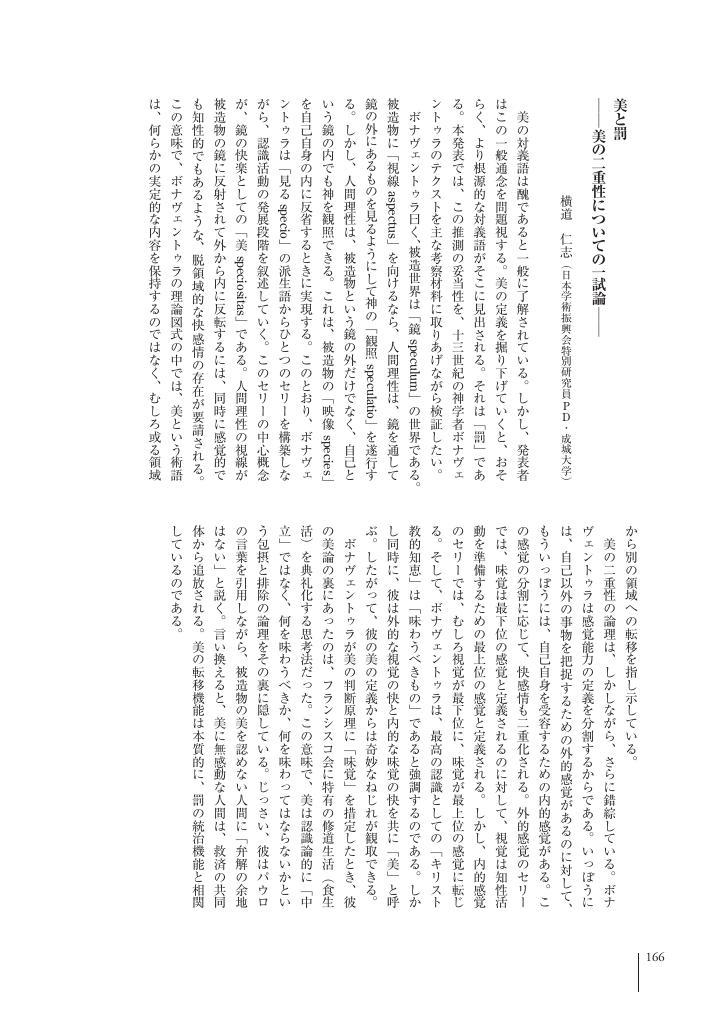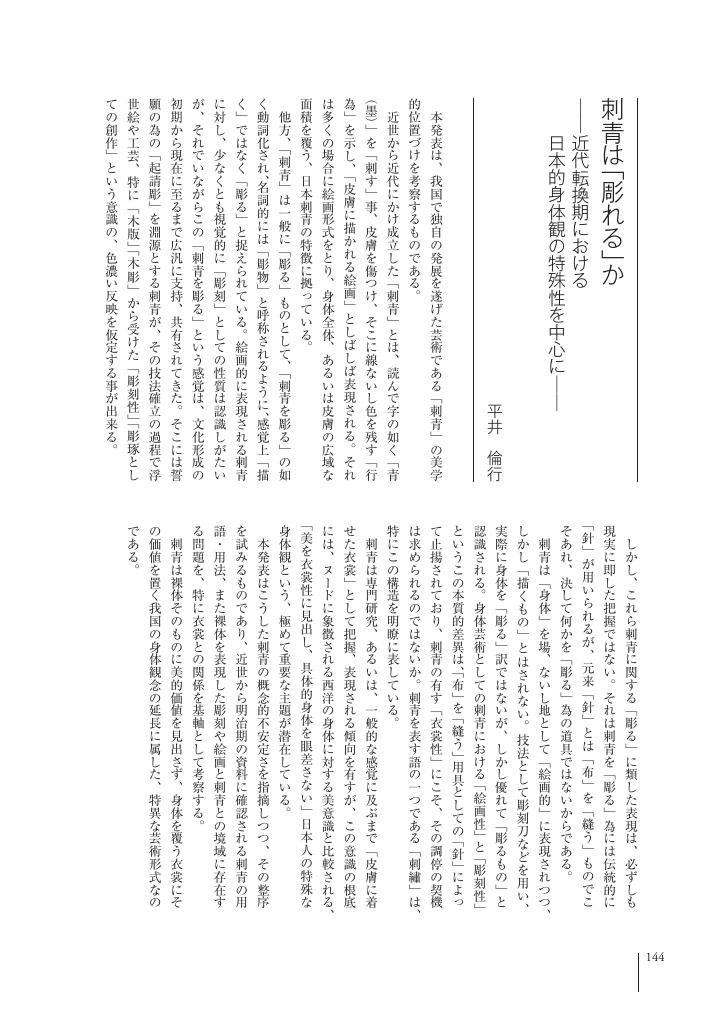1 0 0 0 OA クリストファー・ドレッサー再考 そのジャポニスムとモダニズムの関係をめぐって
- 著者
- 竹内 有子
- 出版者
- 美学会
- 雑誌
- 美学 (ISSN:05200962)
- 巻号頁・発行日
- vol.69, no.1, pp.109, 2018 (Released:2019-06-01)
Christopher Dresser (1834-1904) was one of the first industrial designers in Victorian Britain. Significantly, he became one of ardent promoters of Japonisme at the early stage in Europe. In 1876-77, he took the chance to visit Japan. His book “Japan: Its Architecture, Art and Art Manufactures” (1882) let the Westerners acknowledged the facts about Japanese architecture which had been unfamiliar with them. In fact, he put stress on his profession as an architect in his book “Japan” although he was not. However, there is a little focused on Dresser’s architectural perspective. Former studies have described how Dresser had influenced Japanese art and design advocates through details about their cultural exchanges. Furthermore, Dresser’s later designs have been included in Japonisme. Here, leading historians imply that his Modernist-like design has been influenced by Japonisme. The purpose of this paper is to explore the impact of Japanese design and the meanings of architecture in the formation of his design principles. Eventually, he endeavored to utilize the Japanese exemplars in interior designing. Because of these claims, an author re-examines the validity of the relationship between his Japonisme and Modernism.
- 著者
- 大愛 崇晴
- 出版者
- 美学会
- 雑誌
- 美学 (ISSN:05200962)
- 巻号頁・発行日
- vol.68, no.2, pp.162, 2017 (Released:2019-01-02)
1 0 0 0 OA 「編纂」の教育的/芸術的意義 エドワード・ブロウによる近代イタリア思想の見取り図
- 著者
- 郡田 尚子
- 出版者
- 美学会
- 雑誌
- 美学 (ISSN:05200962)
- 巻号頁・発行日
- vol.68, no.2, pp.163, 2017 (Released:2019-01-02)
1 0 0 0 OA ベルクソンと映画 ミシェル・ジョルジュ=ミシェルによる二つのインタビューをめぐって
- 著者
- 大石 和久
- 出版者
- 美学会
- 雑誌
- 美学 (ISSN:05200962)
- 巻号頁・発行日
- vol.68, no.2, pp.164, 2017 (Released:2019-01-02)
1 0 0 0 OA トスカーナ大公国初期におけるコレクション陳列室 「カリオペの書斎」からトリブーナへ
- 著者
- 古川 萌
- 出版者
- 美学会
- 雑誌
- 美学 (ISSN:05200962)
- 巻号頁・発行日
- vol.68, no.2, pp.165, 2017 (Released:2019-01-02)
1 0 0 0 OA 美と罰 美の二重性についての一試論
- 著者
- 横道 仁志
- 出版者
- 美学会
- 雑誌
- 美学 (ISSN:05200962)
- 巻号頁・発行日
- vol.68, no.2, pp.166, 2017 (Released:2019-01-02)
1 0 0 0 OA シェリングの風景画論における雰囲気 主観と客観の協働として
- 著者
- 八幡 さくら
- 出版者
- 美学会
- 雑誌
- 美学 (ISSN:05200962)
- 巻号頁・発行日
- vol.68, no.2, pp.153, 2017 (Released:2019-01-02)
1 0 0 0 OA 明治時代の回遊式庭園にみる西洋の美的感性の影響 無鄰菴を例として
- 著者
- スコルシ ワナ ロレダナ
- 出版者
- 美学会
- 雑誌
- 美学 (ISSN:05200962)
- 巻号頁・発行日
- vol.68, no.2, pp.154, 2017 (Released:2019-01-02)
1 0 0 0 OA 高松次郎の「謎」を解く 後期〈平面上の空間〉シリーズにおけるマティスの「影響」
- 著者
- 岩見 亮
- 出版者
- 美学会
- 雑誌
- 美学 (ISSN:05200962)
- 巻号頁・発行日
- vol.68, no.2, pp.155, 2017 (Released:2019-01-02)
- 著者
- 武藤 太郎
- 出版者
- 美学会
- 雑誌
- 美学 (ISSN:05200962)
- 巻号頁・発行日
- vol.68, no.2, pp.156, 2017 (Released:2019-01-02)
1 0 0 0 OA イコノクラスムの〈感性学〉 その修辞学・身体論・ドラマトゥルギーを読み解く
- 著者
- 下山 大助
- 出版者
- 美学会
- 雑誌
- 美学 (ISSN:05200962)
- 巻号頁・発行日
- vol.68, no.2, pp.157, 2017 (Released:2019-01-02)
1 0 0 0 OA 聖母の白い聖心(みこころ) 「ルターの薔薇」成立前夜
- 著者
- 蜷川 順子
- 出版者
- 美学会
- 雑誌
- 美学 (ISSN:05200962)
- 巻号頁・発行日
- vol.68, no.2, pp.158, 2017 (Released:2019-01-02)
1 0 0 0 OA 日本工芸の分水嶺 漆芸家・髙橋節郎の一九五〇年代の活動に着目して
- 著者
- 南 有里子
- 出版者
- 美学会
- 雑誌
- 美学 (ISSN:05200962)
- 巻号頁・発行日
- vol.68, no.2, pp.159, 2017 (Released:2019-01-02)
1 0 0 0 OA フランソワ・ブーシェをめぐる批評 受容層の拡大に伴う評価基準の多様化
- 著者
- 太田 みき
- 出版者
- 美学会
- 雑誌
- 美学 (ISSN:05200962)
- 巻号頁・発行日
- vol.68, no.2, pp.160, 2017 (Released:2019-01-02)
1 0 0 0 OA 映像と音の同期に関する考察 〇・一秒のリアリティー
- 著者
- 桑原 圭裕
- 出版者
- 美学会
- 雑誌
- 美学 (ISSN:05200962)
- 巻号頁・発行日
- vol.68, no.2, pp.161, 2017 (Released:2019-01-02)
1 0 0 0 OA 刺青は「彫れる」か 近代転換期における日本的身体観の特殊性を中心に
- 著者
- 平井 倫行
- 出版者
- 美学会
- 雑誌
- 美学 (ISSN:05200962)
- 巻号頁・発行日
- vol.68, no.2, pp.144, 2017 (Released:2019-01-02)
- 著者
- 福田 淑子
- 出版者
- 美学会
- 雑誌
- 美学 (ISSN:05200962)
- 巻号頁・発行日
- vol.68, no.2, pp.145, 2017 (Released:2019-01-02)
1 0 0 0 OA エルネスト・アンセルメにおける「音楽的時間」論
- 著者
- 舩木 理悠
- 出版者
- 美学会
- 雑誌
- 美学 (ISSN:05200962)
- 巻号頁・発行日
- vol.68, no.2, pp.146, 2017 (Released:2019-01-02)
1 0 0 0 OA 表象的特性としての知覚的クオリアと美的クオリア フレーゲ的表象主義にもとづく考察
- 著者
- 松﨑 俊之
- 出版者
- 美学会
- 雑誌
- 美学 (ISSN:05200962)
- 巻号頁・発行日
- vol.68, no.2, pp.147, 2017 (Released:2019-01-02)
1 0 0 0 OA 絵の真偽 画像の使用と画像の内容
- 著者
- 松永 伸司
- 出版者
- 美学会
- 雑誌
- 美学 (ISSN:05200962)
- 巻号頁・発行日
- vol.68, no.2, pp.149, 2017 (Released:2019-01-02)


















